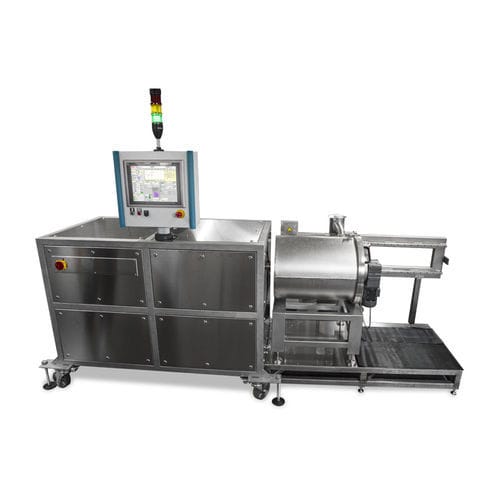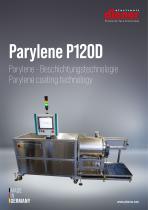
- Products
- Diener electronic
Parylene surface coating system P120Dautomaticmedical
Add to favorites
Compare this product
Characteristics
- Type
- parylene
- Operation
- automatic
- Applications
- medical
- Chamber volume
120 l
(31.7 gal)
Description
Parylene is the short designation of the polymer group of poly(para-xylylenes). The polymers consist of different substituted para-xylylenes. The original basis for coating are dimers. This is a molecular compound consisting of two identical sub-units, the so-called monomers.
Parylene coatings offer a large number of benefits. Parylenes...
are completely conformal, i.e. they adapt even to complex substrate contours such as sharp edges, bore holes or blind holes
are pinhole-free already from coat thicknesses of approx. 0.5 µm
are chemically insoluble and resistant against a large number of chemicals
have very good barrier properties against moisture and chemicals
have a high dielectric strength
have dry lubricating properties (low coefficient of friction)
are hydrophobic: wetting angle for H2O between 92° and 98°
are transparent between 90 and 96 % in the visible wavelength range (depending on type)
are biocompatible: parylenes of the types C and N can be separated which can be certified to USP Class VI, ISO 10993 and FDA.
Coating substance
Parylene N, C, D, F-VT4
Possible coat thicknesses
0.05 to 50 micrometers
Dimensions
Width approx. 2200 mm
Depth approx. 2700 mm
Height approx. 1600 mm
Pyrolysis
4 kW / max 850 °C
Chamber
Diameter: 500 mm
Length: 610mm
Catalogs
Parylene P120D
2 Pages
*Prices are pre-tax. They exclude delivery charges and customs duties and do not include additional charges for installation or activation options. Prices are indicative only and may vary by country, with changes to the cost of raw materials and exchange rates.






